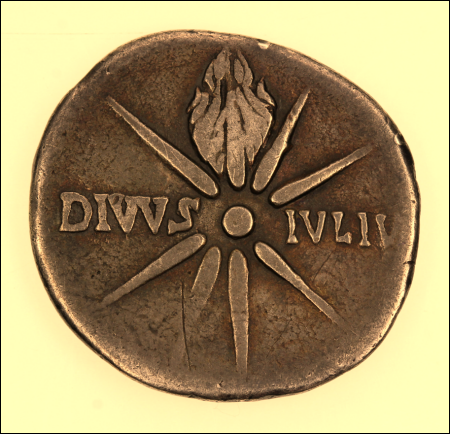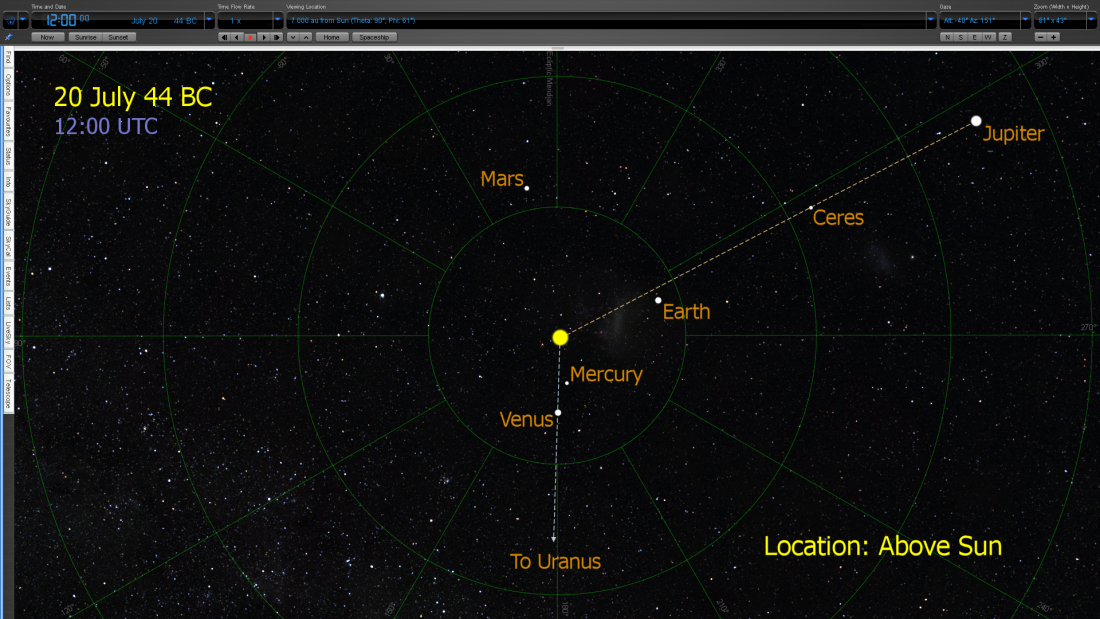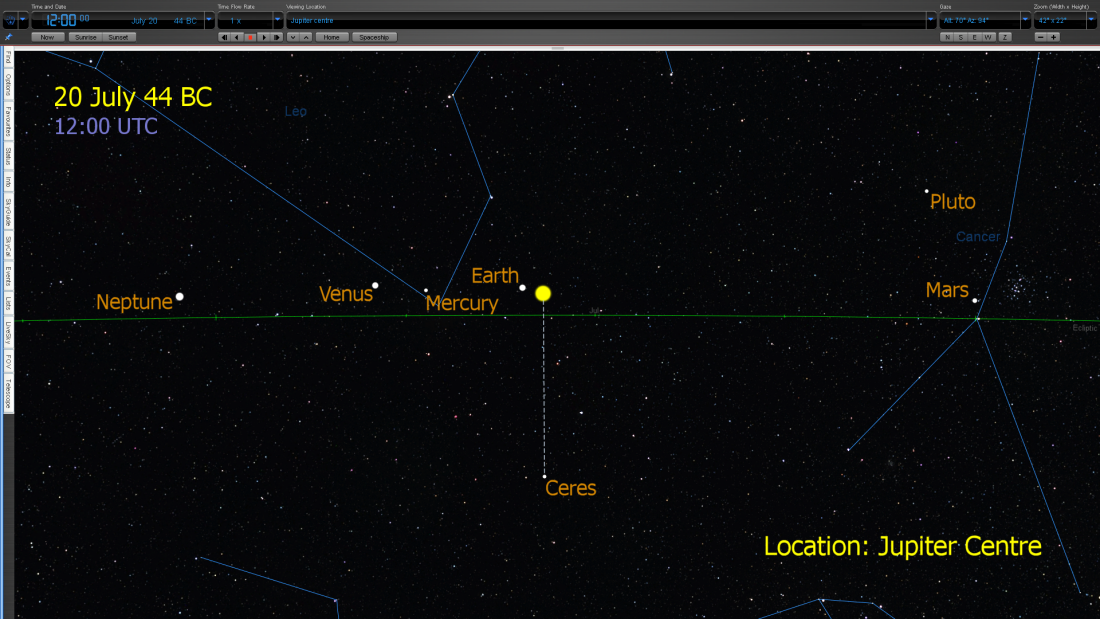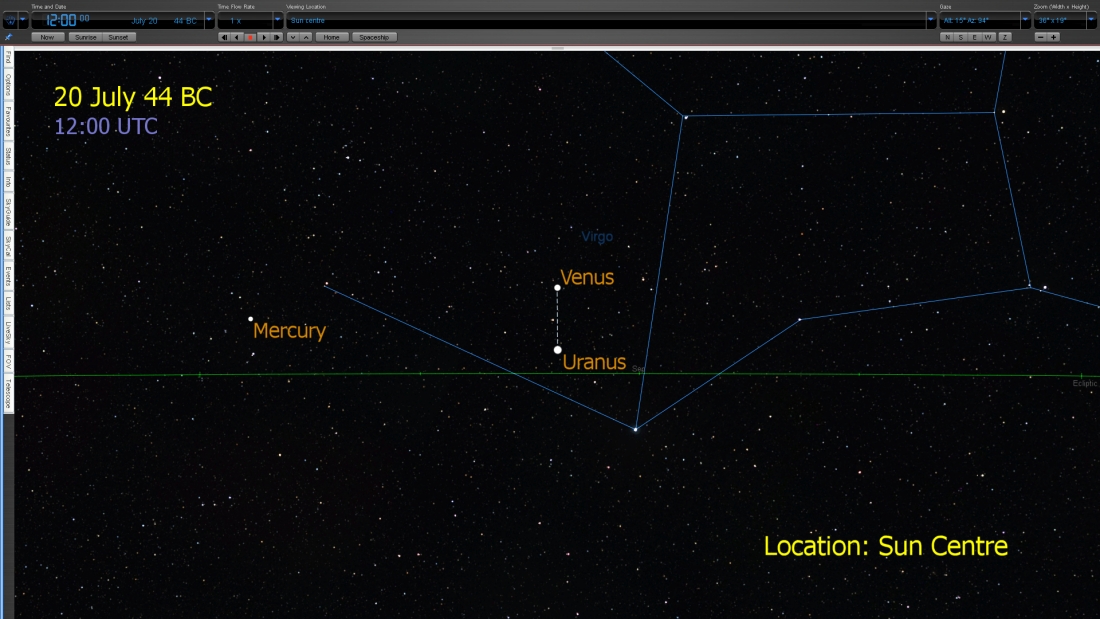Caesar's Comet of 44 BC: Its True Identity Revealed
Caesar's Comet, known to the Romans as Sidus Iulium ("Julian Star"), blazed across the skies just months after Julius Caesar's assassination on the Ides of March in 44 BC. This extraordinary celestial phenomenon, visible in broad daylight for seven consecutive days, was interpreted by the Roman populace as divine confirmation of Caesar's ascension to godhood. His adopted heir Octavian, the future Augustus, astutely recognized the political value of this cosmic event and used it to strengthen his claim to power.

The Comet as a Divine Sign
Ancient historians including Suetonius, Pliny the Elder, and Cassius Dio provide vivid accounts of the comet's appearance. Described as a brilliant object with an exceptionally long tail, the comet made its most dramatic appearance during the Ludi Victoriae Caesaris (Games of Caesar's Victory), held from 20 to 28 July 44 BC. The timing of this celestial display was seen as nothing short of miraculous, with the Roman people widely accepting it as proof that Caesar's soul had taken its place among the gods. Octavian capitalized on this belief by commissioning a temple to Divus Julius and adding a star symbol to Caesar's statues, cementing the comet's role in the political mythology of Rome's transition from Republic to Empire.
The Problem of Determining the Orbit of Caesar's Comet
Modern astronomers have greatly struggled to reconstruct the orbital path of Caesar’s Comet, largely due to the limited and unreliable nature of surviving observations. Only two potential records exist: a debated Chinese observation from 30 May 44 BC, and the well-documented Roman sighting during the late July games. With just these two data points separated by weeks, an infinite number of possible orbital solutions could theoretically fit the comet's trajectory. This fundamental uncertainty has made it impossible to definitively identify Caesar's Comet with any known periodic comet, or to determine whether it might return to our skies in the future.
Brightness Levels & A Sudden Outburst
The comet's luminosity appears to have undergone remarkable changes during its visibility period. From early June to mid-July, it likely faded from a prominent magnitude +1, easily visible to the naked eye, to a much dimmer magnitude +5, near the threshold of human vision. Then, on 20 July 44 BC, coinciding exactly with the opening of the Ludi Victoriae Caesaris, the comet experienced a spectacular 9– magnitude outburst, suddenly becoming dramatically brighter.
This extraordinary flare-up, perfectly timed with the commemorative games honouring Caesar, reinforced the growing belief among Romans that they were witnessing a supernatural manifestation of their slain leader's divine status. Directly commenting upon the event, the famous historian C. Suetonius Tranquillus (69 AD – 122 AD), in his work, The Lives Of The Twelve Caesars (published in 121 AD), wrote the following:
LXXXVIII. He [Caesar] died in the fifty-sixth year of his age, and was ranked amongst the Gods, not only by a formal decree, but in the belief of the vulgar. For during the first games which Augustus, his heir, consecrated to his memory, a comet blazed for seven days together, rising always about eleven o'clock; and it was supposed to be the soul of Caesar, now received into heaven: for which reason, likewise, he is represented on his statue with a star on his brow. The senate-house in which he was slain, was ordered to be shut up, and a decree made that the ides of March should be called parricidal, and the senate should never more assemble on that day.
The True Identity of the Mysterious Comet
It can be seen from the above that even to this day, modern astronomers have been unable to derive any meaningful orbital solution for Caesar's comet. It could therefore have been anything. Even a known celestial body within the solar system. To be sure, that is exactly what it was.
Due to the fact that the flare-up event coincided with the very first day of the Ludi Victoriae Caesaris games on 20 July 44 BC, it is an easy thing to examine the solar system at this time to see if there is anything that stands out. Well indeed there is.
A top-down view of the solar system upon this very date reveals the following:

As can be seen (above), two exceptionally accurate alignments are present at the same time. The most notable of the two being an alignment of Jupiter, Ceres and the Sun. (NB; For an important note on modelling the orbit of Ceres, see note [1] in the Notes section at the bottom of this article):
Positioned at the very centre of Jupiter, in looking down the line, one can see just how accurate the critical alignment is:

Likewise, the alignment of the Sun with Venus and Uranus is also quite exceptional.
From the viewpoint of the Sun itself, one has the following:

Caesar’s Comet = Ceres
Now certainly, the alignment of greatest consequence is that involving Jupiter, Ceres and the Sun. And in consideration of its significance, one should recall the previously noted celestial pattern of 23 March 687 BC. The solution to the Greek myth of Phaethon, as based upon that date, revealed that when Ceres went into alignment with Jupiter and the Sun, it flared up to develop cometary properties i.e. a cometary tail.It would appear that this is yet another instance of a flare-up of Ceres; once again aligned with Jupiter and the Sun. The mystery of Caesar's comet is thus solved as follows: Caesar’s Comet is Ceres.
Essentially, the celestial pattern present on 20 July 44 BC, is one of those rare celestial patterns capable of producing exotic effects in the heavens. Enough to class it as a World Age Ending Alignment, albeit one that can be considered mild, especially compared to that of 23 March 687 BC.
Back to: Signs of the Times Menu
Notes
[1] Concerning modelling the dwarf planet Ceres, I use Starry Night Pro 6.0 softwareSee this article for more information: Ceres Orbital Solution Considerations